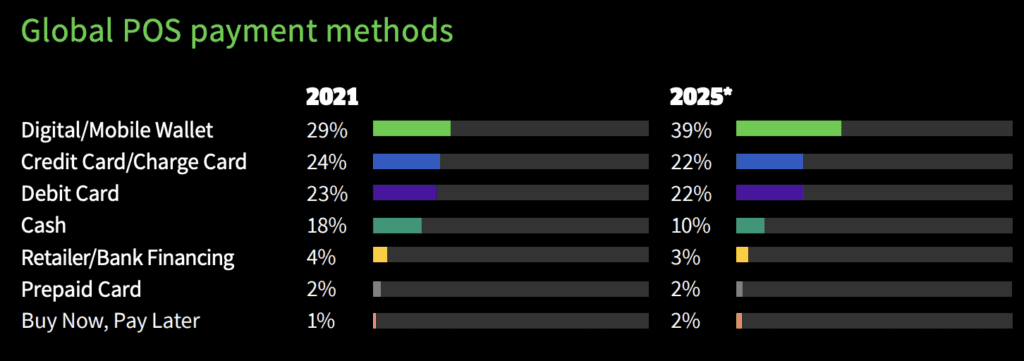The remittance market is a lifeline to many.
According to the International Fund for Agricultural Development (IFAD), over one billion people worldwide use remittances, with flows benefitting more than an estimated 800 million.
The market is considered an integral part of reaching the UN’s sustainable development goals, and at least 80 countries rely on flows to provide 4% of their GDP. Despite challenging economic environments, studies have found that remittances remain consistent, and the market grows in size regardless of macroeconomic conditions.
RELATED: SendSprint targets the human nuances of remittances
However, the sector has been plagued by high costs, which many have touted fintech to solve. In particular, bitcoin has been many’s suggestions to curb high fees. Fintech is said to have significant potential to disrupt the sector.
But has this disruption happened? The IMF published a paper on December 2, 2022, concluding that it had not.
The view, perhaps surprising, stems from an ongoing global dependence on cash in remittances that the IMF says fintechs are far from addressing.
On ‘the road to irrelevance’
A particular area of disillusionment was placed in the development of bitcoin and blockchain technology.
“According to the bitcoin/blockchain narrative, the remittances market would be disrupted because one could use bitcoin to bypass the middleman completely and remit easily, instantly, and at a negligible cost,” referenced the report.
“Those predictions were wrong in every aspect because they ignored, overlooked, or misunderstood several important features not only of the remittance market but also of the bitcoin technology and economics.”
Like the European Central Bank stated just days earlier, the IMF felt bitcoin was too “slow and cumbersome” to deliver on its promise of improved remittances. Aside from the congestion associated with increased usage, the volatile transaction fees were seen as a critical issue in the mass use of bitcoin for remittance.
In addition, the report stated that the need to change fiat to bitcoin and back again added a layer of difficulty and cost.
“Most of the remittance transactions take place in cash, mainly at the receiving end, where financial inclusion is typically very low,” it reads. “That means remittance receivers would need to convert bitcoins into cash using a bitcoin ATM, whose fees are usually five percent or higher…In addition, since cash is a principal payment instrument for sending remittances, most remitters would have to buy bitcoins using cash, which implies even more fees. In a nutshell, bitcoin is not economically viable.”
In much of the evidence supporting this claim, however, references are made to the failings of cryptocurrencies and bitcoin. Little is mentioned about the effects the application of blockchain technology could have on systems that can handle cash deposits and fiat currency.

Cash is king (for some)
The IMF report honed in on remtechs, fintechs focused on disrupting the remittance market.
While the cost of remittances had been falling, the report found they were far from reaching the target of 3%. The two most expensive regions, Sub-Saharan Africa and Asia Pacific saw the most reduction between 2015 and 2020, which amounted to around 0.75%.
Remtechs, although a cheaper form of remittance, seemed to make little difference in the declining costs. The study found that the leveling off of cost reductions coincided with an influx of new remtechs in the space.
“With the advent of supposedly disruptive remtechs, one would have expected that not only the decrease in remittance costs would have accelerated since 2015 – when there was a sharp increase in the number of corridors served by remtechs – but also that the costs charged by banks would have started to converge to those of Money Transfer Operators. However, that was not what happened,” stated the report.
“In other words, remtechs disruptive power seems to have run out of gas.”
The report suggested that this may be the reliance of remtechs on digital transactions in a market that mainly embraces cash. While in many jurisdictions, a dependence on cash is dwindling, the reliance on it at a global scale continues to be prevalent.
In FIS’s 2021 Global Payments report, while it was found global cash usage had continued to drop, it still accounted for 17.9% of POS transactions. The average amount varied according to the region, with the highest dependence in the Middle East, Africa, and Latin America.
The report noted, somewhat ironically, that the disruptive potential of remtechs was baked into the solution from the beginning. Fintechs born in the digital pathways of finance, in this way, restricted themself within the cash-heavy remittance market.
When comparing the costs of remittances in corridors with a remtech present, digital transfers only showed a significant cost reduction. Mobile remittances, although not present in 2015 data, showed that in 2020 they carried the lowest costs.
The resounding conclusion read, “Remtechs and, more generally, fintech, have not delivered what they initially promised and many expected: to disrupt the remittance market.”
In light of this, the suggestion and observation for future success are partnering with traditional banks and money transfer operators to bridge the cash gap. WorldRemit and Xoom were examples of using this strategy to gain success. By partnering with such institutions, the fintechs could offer services such as cash pickups.
Mobile money could save the day
The one saving grace for the IMF seemed to be the increase in mobile money transfers, where they saw a significant reduction in remittance costs. In addition to this, they noted its ability to improve financial inclusion.
“Along with bitcoin, mobile money is another example of genuine fintech innovation, as it enables people to engage in digital financial transactions without needing a bank account. However, unlike bitcoin, mobile money is a successful story,” the report reads.
The focus is on M-Pesa’s success story in Kenya, increasing from 58% of the population with mobile money accounts to 72% in the 4 years after the launch of M-Pesa. In the same period, the number of citizens with bank accounts stagnated.
The presence of M-Pesa has improved the level of financial inclusion in the country, staving off extreme poverty and food insecurity. In addition, introducing M-Pesa improved household consumption and boosted the economy.
While financial exclusion is widespread, the report found that M-Pesa’s success had not been translated into other markets. Mobile money continues to be uncommon. Therefore, mobile remittance remains a distinct minority of transactions and has not led to significant market disruption.
While the report backs this conclusion with compelling evidence, other reports have shown contradicting findings. The GMSA’s State of the Industry Report on Mobile Money 2021 mobile money was found to handle over one trillion dollars of transactions, with over one billion registered mobile money accounts.
Ville Sointu, Head of Solutions & Strategy at Ericsson, retorted via LinkedIn, “The paper’s conclusions on mobile money are a bit peculiar. Suggesting that the model doesn’t work outside Kenya is plain wrong. Global mobile money is a trillion dollar ecosystem these days with proven impact on financial inclusion and the fight against poverty.”
Not all hope is lost
While the IMF extensively criticized the success of remtechs in disrupting the remittance market, they did note it had played an important role. As well as improving competition, the sector is driving digitalization in the market, which could, in turn, increase financial inclusion. In the case of mobile money, this has already been seen.
Many see this lack of disruption as being solved by the mass development of CBDCs, bringing cash into the digital landscape. Referencing the BIS paper on CBDCs in Africa, author Richard Turrin wrote in a newsletter, “The provision of digital cash (as a CBDC) as an alternative means of payment is the top consideration for more than half of the central bankers surveyed.”
Additional studies, such as that included in the white paper from Giesecke Devrient, concluded that cost savings from using CBDCs could be as high as 50%. This can translate into 0.5% of some countries GDP.
As the development of these currencies continues, as well as approaches of the fintech community to the issue, the disruption so many has hoped for may still be in reach.


